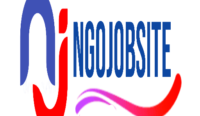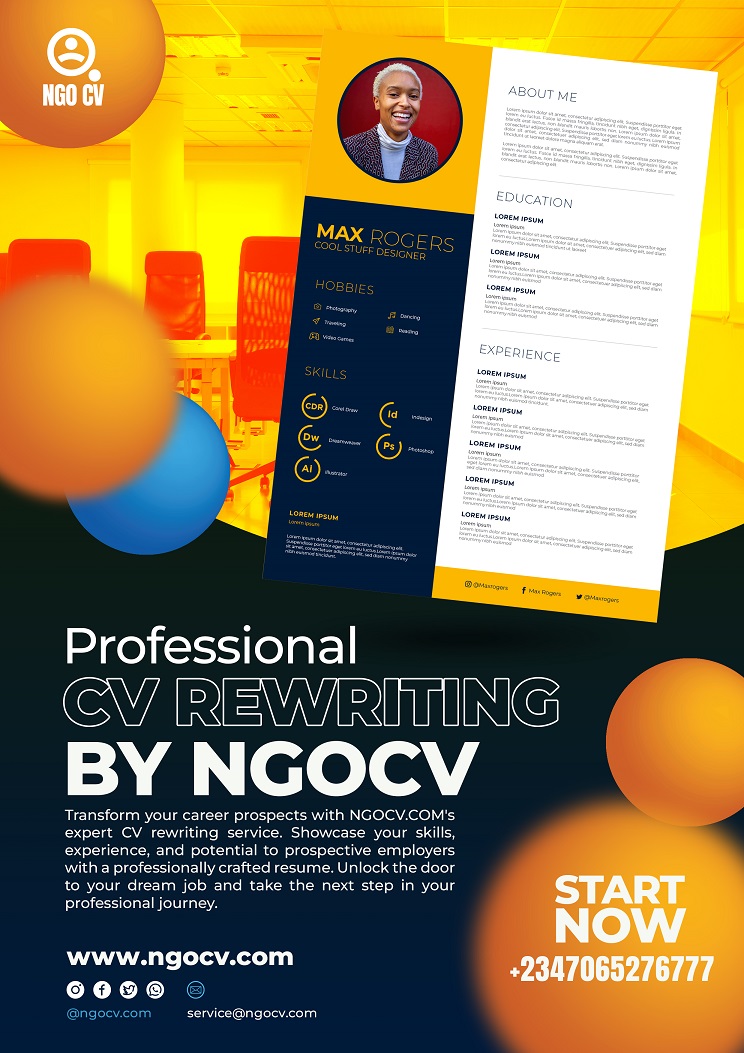Background on Save the Children
Save the Children is the leading global independent organization for children. Save the Children believes every child deserves a future. Around the world, we work every day to give children a healthy start in life, the opportunity to learn and protection from harm. When crisis strikes, and children are most vulnerable, we are always among the first to respond and the last to leave. We ensure children’s unique needs are met and their voices are heard. We deliver lasting results for millions of children, including those hardest to reach.
We do whatever it takes for children – every day and in times of crisis – transforming their lives and the future we share.
Our vision: A world in which every child attains the right to survival, protection, development and participation.
Our mission: To inspire breakthroughs in the way the world treats children, and to achieve immediate and lasting change in their lives.
Our values: Accountability, ambition, collaboration, creativity and integrity.
We are committed to ensuring our resources are used as efficiently as possible, in order to focus them on achieving maximum impact for children.
Child Safeguarding:
Level 3: the role holder will have contact with children and/or young people either frequently (e.g. once a week or more) or intensively (e.g. four days in one month or more or overnight) because they work in country programs; or are visiting country programs; ore because they are responsible for implementing the police checking/vetting process staff.
Project Background
The conflict in Northeast Nigeria has disrupted households’ means of livelihoods, undermined market functioning and triggered large-scale displacements. As a result, the food security situation remains critical, with 2.7 million people requiring emergency assistance in BAY states. Borno State hosts majority of these vulnerable population with 1,116, 858 people facing crisis and emergency (IPC phase 3 and 4). Similarly, among the conflict-affected States, Borno has the highest prevalence of food insecurity (45.7 percent), compared to Adamawa (38.8 percent) and, Yobe (28.7 percent). The households’ access to food has been negatively affected by restricted access to farmlands in most parts of Borno, which further limits households’ ability to produce own food. The situation is further compounded by the current restriction on the cultivation of tall growing crops due to security concerns, which compels a majority of the farmers with access to land to opt for the cultivation of cash crops that are sold to purchase their preferred staple food. Cadre Harmonize1 findings show alarming number of HHs facing crisis, emergency and famine. Despite the reduction in the number of food insecure individuals from 1,750,143 in June – August 2019 to 1,115,868 in October – December 2019 period, the forecasts indicate that at least 1,562 685 people are expected to experience critical food insecurity situations of crisis, emergency and famine by August 2020.
In order to meet immediate food security needs of conflict affected households in Borno, to prevent further loss of productive assets and to mitigate the need for households (HHs) to engage in negative coping strategies, SC is supporting 41,082 IDP, host, and returnee households, reaching approximately 230,548 unique beneficiaries with unconditional restricted cash. All the targeted populations fall within the IPC 3 or worse phases.
The broad goal of the project is
· Improve the immediate food security of the most vulnerable families in Borno through lifesaving assistance.
Purpose of the end-line evaluation
The purpose for the evaluation is to assess the performance of USAID-funded food assistance activities and capture change over time of all baseline indicators from beginning to end of program implementation. The evaluation will determine to what extent Save the Children’s Emergency Food Security program (EFSP) has delivered effective, relevant and timely activities to beneficiaries.
The evaluation will be complemented by a significant learning aspect for all stakeholders by providing concrete and actionable recommendations for future improvement.
Objective 1: Evaluate to what extent Save the Children’s EFSP has delivered effective, relevant and timely activities to beneficiaries as set in the project log frame
Effectiveness:
Through this evaluation, we will seek to respond to the evaluation questions around effectiveness
· To what extent have the planned objectives in the log frame of the project been reached, per indicator, disaggregated by gender and age?
· Did interventions reach the appropriate target groups and individuals within the target areas?
· To what extent have the project activities contributed to the overall goal,
o A particular focus to be placed on how complementary activities in nutrition and livelihoods were integrated, harmonized, and resulted in improved food security status for HHs that received multiple interventions compared to those that received fewer?
· What were the major factors and constraints influencing the achievement of the objectives of the project? What are the main reasons that the project provided or failed to provide to its target beneficiaries the assistance proposed at design stage?
· Have proper accountability and risk management framework(s) been in place to minimize risks on program implementation?
· What was the effectiveness of the Tom Brown supplementary feeding program in treating MAM and preventing the progression to SAM (i.e., decreasing SAM cases), disaggregated by gender, age, and taking into account contextual factors such as whether HHs were receiving food assistance and complementary activities or not (vouchers, micro-gardening inputs), and seasonality (ie. Lean season)?
· What was the effectiveness of the various infant and young child feeding in emergencies (IYCF-E) activities—including counseling, sensitization, and mother-to-mother and father-to-father support groups, radio programs—on nutrition outcomes measured within the program (including early initiation of breastfeeding <1 hour, exclusive breastfeeding <6 months, dietary diversity, MAM/SAM prevalence), disaggregated by gender, age, voucher vs no voucher intervention, gardening vs no gardening intervention, and season (i.e. Early lean, late lean, harvest season)?
· What was the effectiveness of community management of acute malnutrition (CMAM) activities—including mid-upper arm circumference (MUAC) screenings, referrals, and treatment at SC-run outpatient therapeutic programs (OTPs) and stabilization centers—on the prevalence of MAM and SAM, disaggregated by age, gender, voucher vs no voucher, gardening vs no gardening, and season?
Satisfaction
It is important to include beneficiaries’ opinion on the quality of the services received.
· To what extent were beneficiaries informed about how to use the services and where to find food
· To what extent were beneficiaries able to access the services?
· What challenges/barriers did the beneficiaries face while accessing the services?
· To what extent were participants faced with safety issues during their participation?
· To what extent were the beneficiaries satisfied with the food quality, the vendors, the way they received food
· How do beneficiaries perceive the relevance of the project to meet the project’s objective and how have the activities implemented improved their lives? Are there any stories of change?
· How satisfied are beneficiaries with the quality of the various components of the program (vouchers, nutrition, livelihoods)?
· How has the collaboration between Save the Children and local partners contributed to appropriate response and understanding of needs and priorities of the beneficiaries?
· To what extent was the project participatory in all the project cycle?
· How quickly and effectively were protection issues addressed?
This evaluation will also determine the satisfaction of vendors with SC
· Do the vendors find the collaboration with SC beneficial economically as well as qualitatively? How can SC improve collaboration in the following ways?
Negotiating Prices
Encouraging further investment in resource in implementation areas
· Have vendors hired any IDPs to work? Why? How can that be expanded?
· Do vendors and beneficiaries feel safe with SC food assistance program (how they receive their food or money)?
Adaptability/Flexibility
The end line evaluation should assess the overall quality of the implementation.
· To what extent was project able to adapt and provide appropriate response to context changes and emerging local needs, and the priorities of beneficiaries?
· What mechanisms are in place to track project implementation of the Save the Children projects? (i.e. internal monitoring, evaluation, accountability, learning (MEAL) and quality assurance mechanisms)?
· How have they been utilized to increase quality within the project?
· What alterations were made (if any) to the program design in terms of collaboration during the implementation phase based on the reality on ground?
· To what extent did the project interventions contribute to build long-term community capacity?
· To what extent has the program contributed to boosting market supply and increased vendor activity in the intervention zone?
Transition Outcomes
If feasible, the evaluation will assess a sample of previous beneficiary HHs to identify:
· How have their outcome indicators changed since moving off food assistance and how does it compare to existing HHs?
· How do beneficiaries cope after they have been transitioned off food assistance?
· In addition to IGA support received by HHs transitioned off food assistance, have beneficiaries explored other IGAs that are now profitable?
· How have vendors contributed to supporting IDP HHs beyond humanitarian food assistance as a result of this program?
Objective 2: Provide concrete and actionable recommendations based on the findings for areas to improve, gaps in delivery and beneficiary satisfaction, and improvement to program implementation that can be incorporated into future program design**
Recommendations
· What lessons were learned regarding program design, targeting, and implementation?
· What opportunities exist within project to reach more beneficiaries with the available budget or to reduce costs while reaching at least the same number of beneficiaries without compromising quality?
· What were the best practices?
· How effective were the project management, systems, and processes established by the project?
· How effective were the strategies to improve gender equity both at the participant level and project management level?
· How can protection issues identified be proactively mitigated in the future?
Scope of the Evaluation
The scope of the evaluation will cover the entire project from March 2020 to July 2021. The evaluation will also include how the context has changed over time and how this has affected project participants. Using data from previous PDM/reports to understand how beneficiaries have fared within and without the program. Within this period, the evaluation will assess project outcome at all levels including all result areas. This includes, Percentage of households with poor, borderline, and acceptable Food Consumption Score (FCS), prevalence of HHs with Moderate or Severe hunger, and average reduced coping strategies index. The evaluation will also cover the beneficiaries’ knowledge, attitudes and practices as related to MIYCN and nutrition outcome indicators. The evaluation will correlate the outcome of food beneficiaries who also receive kitchen garden items against those who did not. The evaluation of the program’s targeted supplementary feeding program (TFSP) Tom Brown program with children screened MAM (recover rate, death rate, defaulter rate) will provide an insight into better ways of providing support to beneficiaries. Another focus of the evaluation will be the beneficiaries who receive IGAs; have these businesses progress? What interventions have the IGA beneficiaries who received cash as start-up engaged in and what difference does cash make as a modality instead of restricted e-voucher?
Methodology
The data collection will use mixed method of qualitative (focus group discussion, key informant interview) and quantitative approaches (electronic data collected using kobo collect) to gain a deeper understanding of the outcomes of the project, including desk review of background documents (project document, project monitoring data, progress report, field visit reports etc). The external consultant expatiates on the methodology; detailing sequencing quantitative-qualitative, or qualitative-quantitative or concurrently running both.
The Nigeria EFSP team will hire an external consultant and enumerators for the survey, and they will be trained on data collection. The consultant shall use appropriate and strategic sampling method as recommended by BHA.
Deliverables
The consultant is expected to lead, accomplish and submit the following deliverables within the agreed timeframe and budget:
· An inception report, which will serve as an agreement between parties on how the evaluation will be conducted. Items to address:
Understanding of the issues and questions raised in the ToR
Data sources; how to assess the questions in the ToR
Research methodology, including suggested sample and size
Schedule of activities and traveling (timeline)
Detailed budget
· Appropriate draft data collection tools (e.g. methodological guidelines, group interview questions), these tools will be validated by SC and then finalized for field activity
· Raw data in any of the following statistical packages (Excel, STATA, SPSS, CSPro) and also transcribed qualitative scripts
- Power point presentation of preliminary findings.
· A max of 20-page draft (MS Office and PDF for final) in English.
· A max 35-page final evaluation report (in MS Office and PDF for final), excluding annexes and methodology (to be kept simple), in English.
· Both reports should be in the format indicated below, to be submitted to Save the Children. It is preferable to illustrate the results by appropriate graphs, visuals, tables and/or a dashboard with an accompanied explanatory text.
- An Itemized price quotation for consultancy fee (Exclusive of international and domestic travel expenses which will be provided separately by SCI)
The report should consist of:
a) Executive Summary in bullets (max. 2 pages)
b) Introduction
c) Analysis and findings of the evaluation. The analysis should be done according to the objectives
d) Address concerns, lessons learned and comments from Save the Children
e) Conclusions for each of the end line evaluation objectives
f) Recommendations for future projects
g) Annexes:
· Stories of change and quotes from respondents Methodology, including sampling and limitations Relevant maps and photographs of the evaluation areas where necessary
· Bibliography of consulted secondary sources
· Finalized data collection tools
· PowerPoint presentation of preliminary findings to Save the Children Borno
3. Indicative timescales
The data collection phase in the field is to be confirmed between the consultant and Save the Children.
Inception Phase
Draft inception report – 2 days
Tools Development Phase
Deliverable 1: final inception report including budget, methodology, qualitative and quantitative research tools, approved by SC, and the project team – 5 days
Data Collection Phase
Desk review of project data – 5 days
Interviews (FGDs, KIIs) in the field visits, collection of quantitative data – 12 days
Data Analyses Phase
Data analysis and power point presentation of initial findings with the Borno team and draft of the report – 5 days
Report Writing Phase
Draft evaluation report, for comment by project team in Borno and SCUS – 10 days
Deliverable 2: Learning session with team – 1 day
Deliverable 3: Final evaluation report approved by SC – 5 days
Total
45 days
Location and official travel involved
The preferred supplier would be available to travel to the SCI Borno field office location to conduct the field work; including training of enumerators and data collection. The supplier may also work remotely for desk research, report writing and revisions following SC’s review. For a supplier who cannot travel to Nigeria, there will be preference for a candidate with a strong background in remote support for training and data collection. For the former, regular office hours are 9:00am to 5:00pm, Monday to Sunday. Office space will be provided but the consultant is responsible for bringing his/her own IT equipment. Any required travel will need pre-approval by SCI in accordance with SCI’s Travel Policy and applicable RO/CO Expense Policy.
Specific field locations for the survey are as listed below; LGAs: Jere, Konduga, Mafa, MMC.
Qualification and experience
Required
· At least Master’s degree in Education, International Development Studies, Humanitarian Leadership Program, or a related field
· At least 7 years’ experience in working with humanitarian sectoral programs relating to Food security and livelihood program
· Strong understanding of humanitarian and evaluation ethics and a commitment to ethical working practices
· Required to have a SSAFE certificate or HEAT training
· Demonstrated experience with quantitative and qualitative research, data base management and statistical data analysis
· Experience of working in similar emergency settings
· Experience of evaluating FSL and nutrition programs
· Proven record of communicating with beneficiaries.
· Understanding of food security and nutrition programing, standards and protocols
· Ability to assess and further develop a conceptual evaluation tool
· Relevant subject matter knowledge and experience regarding the thematic areas of this FSL and Nutrition project
· Ability to deal with hardship and remote area field work
Preferred
· Experience of working in insecure environments in Northeast Nigeria and managing security risks
· Action-oriented and evidence based approach and strong drive for results;
· Highly developed self-management, and communication skills
· Ability to travel and to work in Borno
Guiding Principles and Values
Adherence to Save the Children Code of conduct, Child Safeguarding practices and confidentiality when interviewing or photographing children. Gender mainstreaming is key to Save the Children and the donor; therefore, the lead consultant will have to ensure that the research team is gender balanced, ensuring that females are available to interact with female beneficiaries and vice versa. The consultant will also take into account principles of impartiality, independence, objectivity, participation, collaboration, transparency, reliability, privacy, and utility throughout the process.
Selection process
Save the Children will use its internal guidance, checklists and an interview process to select the successful consultant. The guidelines require the consultant to submit, a proposal explaining, their comprehension of the ToR, and how they would approach this assignment, with a summary of their methodology, especially in terms of how they plan, to meet the objectives, including a period and budget. This should include a team composition with a lead consultant and at least one other experienced evaluator and a cv of each person to be involved in the assignment, including relevant experience, a detailed budget and time availability
THE ORGANISATION
We employ approximately 25,000 people across the globe and work on the ground in over 100 countries to help children affected by crises, or those that need better health care, education and child protection. We also campaign and advocate at the highest levels to realize the right of children and to ensure their voices are heard.
We are working towards three breakthroughs in how the world treats children by 2030:
- No child dies from preventable causes before their 5th birthday
- All children learn from a quality basic education and that,
- Violence against children is no longer tolerated
We know that great people make a great organization and that our employees play a crucial role in helping us achieve our ambitions for children. We value our people and offer a meaningful and rewarding career, along with a collaborative and inclusive workplace where ambition, creativity, and integrity are highly valued.
Save the Children is committed to ensuring that all our personnel and programmes are absolutely safe for children.
We undertake rigorous procedures to ensure that only people suitable to work with children are allowed to join our organization and all candidates will, therefore, be subject to this scrutiny.
We need to keep children safe so our selection process reflects our commitment to the protection of children from abuse.
Applicants are advised that Save the Children International does not require any payment or expense during the entire recruitment process. Any request in this direction should be immediately reported as it is contrary to the values and practices of our organization.
Due to the volume of applications received, Save the Children may not provide feedback to all applicants. Only shortlisted candidates will be contacted.
Qualified candidates are encouraged to apply as soon as possible, as applications will be reviewed as received. Save the Children reserves the right to change the closing date, if considered necessary.
How to apply
Interested candidate(s) should forward their expression of interest information – technical proposal explaining, their comprehension of the ToR, and how they would approach this assignment, summarizing the methodologies, and approaches they plan to use, including a timeline. Two samples of similar previous assignments and their availability to [email protected]




